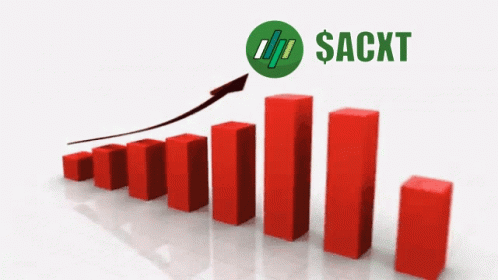How can competitor analysis make your business more successful?
-
Vladimir Kosygin
Copywriter Elbuz
Have you ever wondered what your competitors are doing when no one is looking? In the world of business, the secrets of success are often hidden behind the monitor screen, where every click and every decision opens the gates to new opportunities. How to find these keys? Let's understand together the intricacies of analyzing competitors' websites and reveal the secrets that will help your business get ahead.

Glossary
- 🎯 Website analysis is the process of studying the characteristics and structure of a competitor's website to identify its strengths and weaknesses.
- 📈 Site traffic - the number of unique visitors visiting the site over a certain period of time.
- 💲 Pricing is a strategy for setting prices for goods or services based on market and competition analysis.
- 🛒 Number of orders - the total number of purchases made by customers on a competitor's website over a certain period.
- 🔍 Assortment monitoring - tracking of available goods and services on a competitor’s website, including changes and innovations.
- 🌍 Site geography - analysis of the location of users visiting the site, which helps determine the target audience.
- ⚙️ Identifying a CMS is the process of identifying the content management system used to develop and support a competitor's website.
- 📊 How to find out the traffic to a competitor's website - using special tools and services to estimate website traffic.
- 🌐 alexa.com is a service that provides information about traffic and website rankings.
- 📉 Serpstat is a tool for analyzing keywords and advertising activity of competitors.
- 💰 How much does your competitor earn? is a question that can be answered by analyzing the revenues and business models of competitors.
How to start searching for competitors for effective analysis
When I first started thinking about how to analyze competitors, I realized that the first step was to find those same competitors. I remember how at the beginning of my career I launched a new product and didn’t even think about the competitive environment. Starting with a simple but effective approach, I soon discovered many useful strategies.

I first imagined myself in the buyer's shoes. You might be surprised, but it actually worked. I went to Google and Bing and searched for my product using standard queries. For additional objectivity, I asked friends and colleagues to help me understand what options they would see on the search pages. This allowed me to gain a broad understanding of the competitive front.
Having some ideas about who my competitors were, I researched different regions, especially if I had offices in different cities. I used the region search feature to find strong companies with active advertising campaigns. I selected 4-6 companies for further analysis as a smaller sample provided better data while saving time. It is important to remember that it was advisable to move away from large retailers - for example, such as Rozetka or Prom - since they are not always direct competitors in highly specialized niches.
Once I identified my competitors, I was able to approach analyzing their sites, which taught me invaluable lessons. I start by studying their traffic using various online services. I can confidently say that tools like SimilarWeb and Ahrefs have provided me with excellent data on traffic, where it's coming from, and what pages competitors are focusing their efforts on.
I also paid attention to the pricing. I would recommend that you regularly check what your competitors are offering and what promotions they are running. I even created a pricing table so I could visualize the differences and then decide how I should position my product. It turned out to be a great investment of time.
In addition, many competitors provide unique offers or bonuses, which is also worth considering. I encouraged myself and my team to find such features. We have added additional services to our offer, which has significantly increased customer interest.

Here are a few conclusions I made during the analysis:
| Helpful | Don't do |
|---|---|
| Analyze your competitor's website using analytics tools | Ignore strong companies in your area |
| Collect information about pricing and promotions | Select more than 6 companies for analysis |
| Identify competitors' unique offerings | Study only large retailers |
| Seek feedback from competitors' customers | Skip exploring different cities |
I sincerely recommend that you get serious about finding and analyzing your competitors. I personally believe that by following these steps, you can significantly improve your business performance and increase your market share.
Analysis of competitors' websites
As a business owner, I More than once I have been faced with the task of analyzing competitors’ websites. Researching their practices was an important step for me in helping me understand where I was in the market and how I could improve my performance. I am confident that such analytics can provide you with invaluable information to grow your business.
Number of orders from a competitor
The first step in analyzing a competitor's online store is to find out the number of orders. I clearly remember one case when I needed to understand how active my competitor was. I decided to place an order through his website, providing fake contact information. Surprisingly, the order worked without difficulty, and the inscription appeared on the screen: “Your order 1568 has been accepted.” I immediately placed another order and the number changed to 1569. This made me understand that the numbers are assigned sequentially. This way, I could periodically place such orders and track the increase in numbers once a week, which allowed me to estimate weekly order volumes.

🛒 Approaches to determining the number of orders:
- Analysis of the order number upon confirmation.
- Comparison with previous issues.
Please note that this method has its drawbacks. I realized that it is impossible to say exactly what value orders represent. But I managed to estimate it by multiplying the number of orders by the average bill in our niche to understand how much a competitor earns.
| Useful | Not useful |
|---|---|
| Fake orders | Methods that do not work without confirmation |
| Analysis of changes in order numbers | Blind imitation without analysis |
Monitoring Competitor's Assortment
Assortment analysis is one of the main aspects through which I could study the true scale of the business. In one of the projects, I was able to find out the total volume of assortment presented by a competitor. I recorded not only the number of products, but also how they are organized on the site. This showed me how wide a range there is on the market. I understand perfectly well that the width of the assortment determines the target audience.
🛍️ What you should pay attention to:
- Total quantity of goods in the store.
- Availability of goods to order.
During my analysis, I saw that a competitor had complex delivery patterns and expectations for some products. This gave me insight into how I could offer a better service to my audience.
| Useful | Not useful |
|---|---|
| Studying the availability and delivery time of goods | Ignoring the assortment of new products |
| Assessing the breadth of assortment | Unfounded assumptions about the target audience |

Site structure and usability
I've seen time and again that website structure plays a critical role in the success of a business. For example, in one case I was analyzing a competitor's website with good prices but terrible navigation. I could instantly get lost trying to find the product I was looking for. This helped me see the importance of convenience and simplicity that users expect.
🔍 Key Aspects:
- Ease of navigation and product search.
- Description of products and their information content.
I recommend focusing on making it convenient for your client not only to find the product, but also to make a purchase. I introduced related products and improved the functionality of the online consultant, which had a positive impact on my sales.
| Useful | Not useful |
|---|---|
| Navigation bet | Complex, unintuitive interfaces |
| Cross-selling through related products | Lack of information about products |
Monitoring prices of online stores
Understanding a competitor’s pricing policy is one of the most difficult and important areas. I use special services such as Competera or Priceex to regularly monitor competitors' prices and offers. One day, using such tools, I discovered how prices influence purchasing behavior.
💰 What price monitoring gives:
- Determination of strong and weak product positions.
- Analysis of the influence of prices on choice.

I noticed that if a competitor sets low prices for certain groups of goods, this may indicate profitable suppliers. This way, I was able to rebalance my own range and offer similar products at competitive prices.
| Useful | Not useful |
|---|---|
| Using price automation | Neglecting price data |
| Constant stock analysis | Wrong conclusions without statistics |
Geography website
The next aspect that I paid attention to is the geography of the competitor’s activities. I explored their Contact tab to gather information about physical stores, branches, and opening hours. In one project, I discovered that my competitor had several branches in major cities, which allowed him to easily deliver goods.
🌍 Key points of analysis:
- Availability of a physical store.
- Scope - local, regional or administrative.
This data helped me better formulate my promotion policy. I began to actively promote my products in the same regions where my competitor operated, which significantly increased my market share.
| Useful | Not useful |
|---|---|
| Studying the branch structure | Ignoring local specifics of work |
Determining the CMS of a website
Sometimes, for in-depth business analysis, it is useful to know what management system a competitor uses. I used services like WhatCMS and 2ip to pinpoint the specific platforms and plugins they use. This gave me the opportunity to compare technical solutions and adapt my own.

🔧 Useful aspects:
- Features and functionality of the site.
- Potential improvements to your CMS.
I recommend paying attention to this aspect, since even small details can have a significant impact on business processes.
| Useful | Not useful |
|---|---|
| Using analysis tools | Blind repetition of other people's practices |
As a result, knowledge and application of these methods of competitor analysis allowed me to better understand the market and occupy my niche, which gives good results in business.
How to determine competitor's website traffic
Website traffic - this is one of the most important indicators that I always use to analyze competitors. It allows me to not only evaluate traffic, but also gain a deeper understanding of what strategies work in my niche. In my projects, I have encountered the fact that it is not always easy to access this information, since many sites prefer to hide their statistics. However, I have discovered several proven methods that will help you with this.

First of all, I would recommend that you check for traffic counters in the footer of the site. It may seem rare, but sometimes companies leave this counter open. For example, in one of my recent projects, I noticed that one of the competitors had an open Google Analytics counter installed at the bottom of the page. I used the keyboard shortcut CTRL + U to open the source code of the page. I quickly found the counter number, which showed up as 4403596.
After that, I went to the Google Analytics website where I entered this number. To my surprise, the account turned out to be open, and I received detailed statistics on the competitor’s site. This information was invaluable as I was able to estimate their traffic, and even some of the sources where visitors were coming from.
There are other tools that I use to analyze traffic. For example, services like SimilarWeb and the like. They provide general insights into traffic and demographic information. I evaluate their data, but always remember that these are only approximate numbers.
I also analyzed how different companies formulate their pricing strategies. This helped me understand which offers were most attractive to the client. In one case, I noticed that my competitor began offering significant discounts on holidays, which immediately affected their traffic. I immediately adapted my strategy and launched a similar promotion, which led to a noticeable increase in traffic to my site.
Based on my experience, I believe it is important to monitor changes in competitor pricing and adapt to those changes. For example, if I see that competitors have started offering similar products at lower prices, I use this as an opportunity to analyze my costs and offer more attractive terms.

📊 What to do:
- Use traffic analysis tools like Google Analytics and SimilarWeb.
- Constantly monitor the price dynamics of your competitors.
- Use your findings to tailor your own business strategies.
📉 What not to do:
- Don't rely only on data from one source; It is better to combine information.
- Avoid ignoring changes in competitors' strategies.
| What's useful | What's not useful |
|---|---|
| Use multiple analysis tools | Rely on just one metric |
| Adapting your own strategies based on analysis | Ignoring the dynamics of competitors |
| Monitoring prices and promotions of competitors | Unproactive market behavior |
By following these recommendations and using proven analysis methods, you can significantly improve your competitive position in the market.
Analysis of competitor sites using alexa.com
When I started my journey in the business world, especially in the online space, one of the most useful tools for analyzing competitors was alexa.com. With his help, I was able to gain a lot of valuable information that helped me develop successful strategies for my business.

First, I simply entered the competitor's domain and, to my surprise, I learned the following key moments:
🌍 Geography of users: alexa. com provides a country breakdown to help you determine where visitors to your competitor's site are coming from. As it turns out, understanding my competitor's geographic audience helped me target my marketing efforts to the right regions.
📈 Attendance dynamics: Perhaps this is one one of the most important indicators. I was able to see if traffic on a competitor's site was increasing or decreasing. This information was especially helpful during my selling season; I could adapt my offerings based on trends.
🚫 Failure Rate: Can't underestimate this one indicator It immediately demonstrates how convenient the competitor’s website is and how competitive it is. After analyzing this aspect, I drew conclusions about my shortcomings and made changes to my site.
🔍 Basic queries: Knowing how to what queries the site receives traffic gave me a clear understanding of which products and services are most popular. Following the example of competitors, I was able to adjust my offerings and marketing strategies.
👥 Target audience: alexa.com also gives an idea of who exactly is visiting the site. I used this information to create more targeted advertising and improve the user experience on my site.
I would recommend anyone trying to understand their competitiveness in the market to use this tool. My practical steps included:
Regular monitoring: I often looked at alexa.com to see changes in competitors' strategies. This approach has allowed me to stay on top of the latest trends.
User behavior analysis: I recommend not limiting yourself numerical data, as well as apply qualitative methods of analysis, for example, studying customer reviews of competitors' websites. This helped me identify my weak points.
Strategy adjustment: Depending on the information collected I adapted my proposals, which ultimately resulted in better business performance.
"Competitive analysis is not only an opportunity to learn from the best, but also a chance start to stand out among them." - Jeff Bezos.

Based on my experience, I can I can confidently say that interacting with competitive data through tools like alexa.com has contributed to the growth of not only my business, but also my understanding of the market as a whole.
| Positive aspects | Negative aspects |
|---|---|
| Gives a good idea of competitors | Data may be approximate |
| Helps in understanding the target audience | It is not always possible to obtain up-to-date data |
| Allows adapt strategies | May take time to analyze |
So, my experience using alexa.com was a valuable lesson that I recommend to every entrepreneur or marketer. Take the opportunity to research your competitors and use this knowledge to the fullest.
Analysis of competitors' websites using Serpstat
When I I began to delve into the analysis of competitors' websites, I was faced with the need to use powerful tools that would help me not only collect data, but also analyze it qualitatively. One of these tools was Serpstat. I can confidently say that it turned out to be an order of magnitude more effective compared to free analogues. For those who want to take a serious approach to analyzing their business, choosing this service is a serious step forward.

Using Serpstat, I was able to conduct a detailed analysis of my competitors' contextual advertising in Google AdWords . This service, despite its paid nature, provides much more accurate data, allowing me to understand exactly what advertising campaigns are being launched by guys from the next niche. For example, I noticed that one of my competitors kept using certain keywords, which led to him successfully increasing his traffic. I would advise you to pay attention to such details when analyzing. This will allow you to not only identify successful strategies, but also adapt them to your business model.
One of the most useful aspects I found was analyzing changes in search results in both Bing and Google. I observed the dynamics of my competitors' positions, which gave me insight into how their strategies were changing. I noticed that as the season warmed up, competitors began to actively promote special offers, which significantly increased their visibility. I recommend always monitoring changes in search results, without losing sight of new trends!
While working with the service, I spent a long time working on the semantic core of my site. Thanks to Serpstat data, I was able to identify not only high-frequency queries, but also “long tail” queries, which were less competitive, but no less valuable. I truly believe that understanding what queries a service collects can be the real golden key to the success of your business.
I highly recommend using Serpstat statistics to formulate your business strategy. If you don't have a clear understanding of your position and that of your competitors, you risk being left behind. I always emphasize how important it is to work with real data in order to monitor the status of your market.
| What to do | What not to do |
|---|---|
| Use Serpstat for analysis competitors | Rely only on free services |
| Pay attention on the semantic core and trends | Ignore changes in search results |
| Monitor competitors' positions in real time | Neglect detailed data analysis |

Thus, using such effective tools as Serpstat, I was able to significantly strengthen the position of my business in the digital world. Don't miss the chance to improve your strategies, draw conclusions from competitor analysis and use the collected data in practice.
What is the financial reality of competitors?
When I plunged into the world of analyzing competitors' websites, I was always interested in the most important question - how much does my competitor earn? It's not just curiosity, but a desire to understand which approaches work and which don't.

I remember my first project when I needed to estimate the income of one of the players on the market. I applied several steps that I now confidently recommend. This process is subject to a standard formula: multiply the average bill by the number of orders. Yes, this is an approximate estimate, but, believe it or not, it gives a fairly clear understanding of the financial side of the competitor.
For example, I analyzed a site that had about 70,000 monthly visitors. Within a month they were able to place 500 orders. Here's how I calculated it:
- I found out the number of orders for the month - 500.
- Then I subtracted the website traffic statistics - 70,000.
- After dividing, I got the conversion: 500/70,000 = 0.007 or 0.7%.
Yes, the data seems approximate, but it opened up a new reality for me. These numbers help provide a general idea of how successful a site is and its average earnings.
I understand that the exact amount of income cannot be known without access to internal company information, but this data is enough to assess the situation.
Here are some practical steps I would suggest:
📊 Analyze the competition: Use tools to track traffic and conversion. For example, SimilarWeb or SEMrush provide excellent traffic data.
📈 Comparison of prices and offers: Study the price competitor's policy. Why is their order volume so high? This may be due to unique offers or promotions. Always take your average bill into account.
📅 Regular Monitoring: Consistency is the key to successful analytics. I recommend that you analyze once a month to record changes and track dynamics.

Interesting that sometimes the perceived value of a product or service is what really matters. I have noticed that companies that create unique offers always have a high level of orders, even if the prices are above average.
An important part of the analysis is to ask, “What works for them?” I strongly advise you to ask yourself this question at every stage.
| What to do | What not to do |
|---|---|
| Use analytics tools | Rely only on guesses |
| Analyze your competitor's actions | Don't ignore their successes |
| Update your data regularly | Don't forget about current changes in your niche |
Don't forget that a key aspect of your business's success is not simply copying competitors' strategies, but adapting them to your needs. I would encourage you to consider different approaches and find what works for you.
Pay attention to your environment and use these techniques to improve your business performance. I am confident that by following these tips you can make significant progress. Learn, adapt and take action!

Experience Coca-Cola Company
The Coca-Cola Company is one of the most famous brands in the world specializing in the production of soft drinks. Coca-Cola's main goal is not only to maintain its leading position in the market, but also to constantly improve its business strategy taking into account the competitive environment. The company has several key goals:

- Increasing market share 🍹
- Pricing strategy optimization 💰
- Expanding the product range 🥤
Major Problem to Solve
One of the major problems that Coca-Cola faces is the desire to monitor the actions of competitors and adapt its strategy to changing market conditions. This includes studying the analysis of competitors' websites, their product range, keyboard and researching their sales.
Target Audience
Coca-Cola's target audience includes various consumer groups including youth, parents and business people. The main interests of this audience:
- Our products should be affordable and tasty ❗
- Conservative and modern health and wellness needs 🌱
- Emotional connection to the brand and its values ❤️

Key points that may be of interest to potential clients
- Long-term sustainability: Coca-Cola has implemented sustainability initiatives to reduce its carbon footprint, helping the company attract environmentally conscious consumers.
- Personalized Approach: Use data to personalize marketing offers and customer communications, significantly increasing satisfaction and loyalty.
Specific results of the project
As a result of the analysis of the sites of Coca-Cola competitors, it was possible to identify a few key aspects:
| Parameters | Values |
|---|---|
| Market share | 44% worldwide |
| Number of competitors | Top 10 Brands |
| Price Ranges | 1.5 - 2.5 USD per liter |
| Assortment | 500+ products |
"Competitor analysis helped us identify new trends in the market that closed gaps in our product line, allowing us to increase real sales by 15% in six months." — Patience Richards, Coca-Cola spokeswoman.
The monitoring showed the following result: it was revealed that key competitors have significantly stepped up their social media advertising campaigns, resulting in a 30% increase in their traffic.
As a result of the research and subsequent changes, Coca-Cola increased sales by 10% in just one quarter, introducing a new pricing strategy and improving website usability with a focus on mobile devices .

Frequently asked questions on the topic: How can competitor analysis make your business more successful?
1. How to find competitors for analysis?
You can use search engines, social networks and specialized platforms such as Alexa, Serpstat and others to identify the main players in your niche.
2. How to analyze a competitor's website?
Look at its structure, navigation, content, keywords and use of SEO techniques. It is also useful to analyze loading speed and mobile responsiveness.
3. How to find out the number of orders from a competitor?
Mostly, accurate order information is difficult to obtain. However, you can use estimated data from analytics systems such as SimilarWeb or SEMrush.
4. How to monitor a competitor’s assortment?
Subscribe to competitors' newsletters, visit their sites regularly, or use tools to monitor changes on the site.
5. How to evaluate the structure and usability of a competitor’s website?
Conduct user experience testing, analyze navigation and information accessibility. Check out how easy it is to order and find the products you need.
6. How to monitor the prices of competitors' online stores?
Use special services such as Price2Spy or Competitor Price Watch, which automate the collection of price information from competitors' websites.
7. How to find out the geography of a competitor’s website?
Analyze data using tools like Google Analytics, SimilarWeb or Ahrefs, which can provide information about visitors by region.
8. How to determine the CMS used by a competitor's site?
You can use online services such as BuiltWith or Wappalyzer that show the technologies used on the site.
9. How to find out traffic to a competitor’s website?
Visit resources like SimilarWeb or Alexa, which can provide traffic estimates and the source of visits.
10. How to find out how much your competitor earns?
Revenue statistics can be obtained through market research, specialized reports from analyst firms, or by assessing a company's financing and sales volume.
Thank you for reading and for becoming more experienced! 🎓
Now you have in your hands an arsenal of knowledge that will make you a true master of competitor analysis. 🚀 Every decision you make will be based on facts, not guesses. As funny as it may seem, you are already one step ahead of your competitors because you understand pricing and site visits can influence your success. Share your thoughts in the comments! Which piece of advice was most valuable to you? 😊
Vladimir Kosygin

- Glossary
- How to start searching for competitors for effective analysis
- Analysis of competitors' websites
- How to determine competitor's website traffic
- Analysis of competitor sites using alexa.com
- Analysis of competitors' websites using Serpstat
- What is the financial reality of competitors?
- Experience Coca-Cola Company
- Frequently asked questions on the topic: How can competitor analysis make your business more successful?
- Thank you for reading and for becoming more experienced!
Article Target
Teach readers how to analyze competitors' websites to increase their business performance.
Target audience
Entrepreneurs, marketers, online store and business owners.
Hashtags
Save a link to this article
Vladimir Kosygin
Copywriter ElbuzWords are tools, and my mission is to breathe life into online store automation. Welcome to the world of my texts, where every line fills business with meaning and efficiency.
Discussion of the topic – How can competitor analysis make your business more successful?
Provides information on how to analyze competitor traffic, pricing, and order volumes to improve your business strategies.
Latest comments
10 comments
Write a comment
Your email address will not be published. Required fields are checked *

















Владимир Косыгин
Studying competitors is not only about numbers, but also about their strategies. Some offer unique services, others focus on service. What do you think is more effective in attracting customers? 🤔
Liam Smith
I agree, Vladimir! I think the uniqueness of the offering may outweigh the price. I've had experiences in the past where we lowered the price, but customers still chose the more expensive product because of its quality. 💡
Anna Müller
What about user analysis? I noticed that it is important not only to look at the numbers, but also to understand what motivates clients. For example, reviews help identify weak points! 🌟
Pierre Dupont
Yes, Anna! By analyzing reviews you can get a lot of useful information. Plus, conducting surveys is a great way to get deeper insights from customers. 💬
Giulia Rossi
Interesting thought, Pierre! I recently read that using web analytics helps not only study competitors, but also predict trends. It's often worth relying on big data! 📈
Tomasz Nowak
I agree, Julia! But sometimes too much data can be confusing. Narrowing your analysis down to a few key metrics is helpful. How do you go about choosing these metrics? 🤔
Станислав Петров
I don't see the point in these analyses. All these trends are changing quickly, but the good old methods still work. Manual selling is easier and more effective. 😂
Veronica Garcia
Stanislav, but the world is changing, and we must change with it! I think it's important to adapt so you don't fall behind. Maybe you have some examples from practice? 🌎
Владимир Косыгин
Stanislav, I respect your opinion, but ignoring modern methods is also risky. Integrating old and new approaches can give the best results. How do you see this? 🤔
Emilia Kowalska
I am impressed by your opinion, Vladimir! Alternative strategies allow you to identify elements that work and those that don’t. I always try to experiment with approaches! 💪